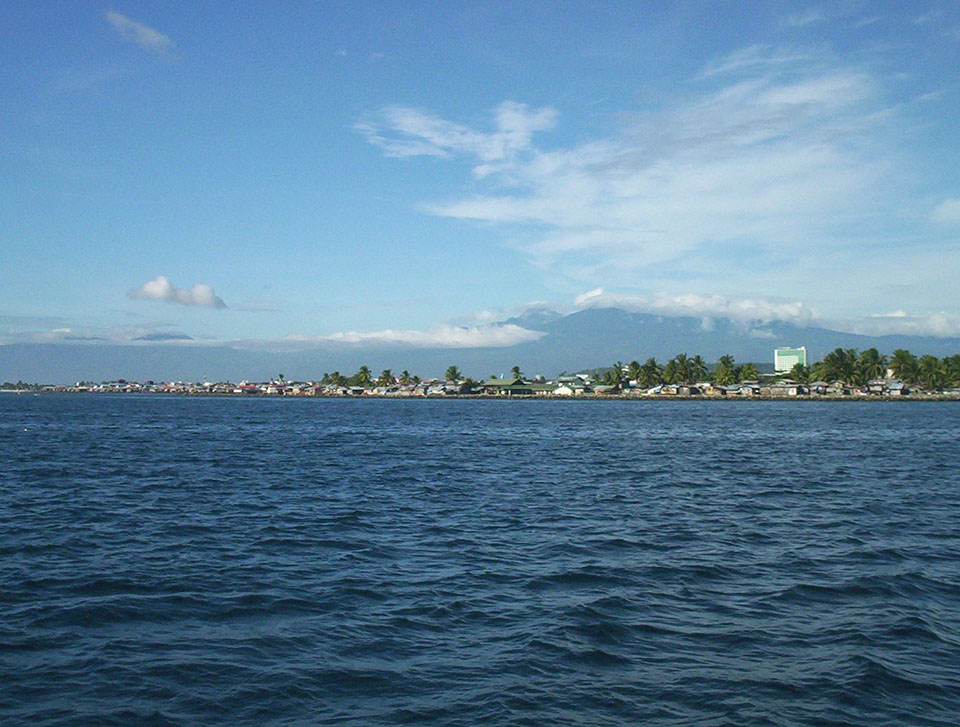Since its original proposal in 1992 by Canada at the Earth Summit in Rio de Janeiro, Brazil, World Oceans Day has been unofficially celebrated every 8. It was not until late 2008 that it was officially recognized by the United Nations.
“The purpose of the Day is to inform the public of the impact of human actions on the ocean, develop a worldwide movement of citizens for the ocean, and mobilize and unite the world’s population on a project for the sustainable management of the world’s oceans,” says the United Nations in its website.
“(The oceans) are the lungs of our planet and a major source of food and medicine and a critical part of the biosphere,” the UN adds.
This year’s theme is: “The Ocean: Life and Livelihoods.”
The ocean, if you care to know, produces at least 50% of the planet’s oxygen. In like manner, it is the key to the economy with an estimated 40 million people being employed by ocean-based industries by 2030.
“This year’s theme is especially relevant in the lead-up to the UN Decade of Ocean Science for Sustainable Development, which will run from 2021 to 2030,” the UN states. “The Decade will strengthen international cooperation to develop the scientific research and innovative technologies that can connect ocean science with the needs of society.”
In the Philippines, the ocean plays an important role as the country is an archipelago consisting of 7,1000 islands. It is located on the eastern rim of the Asiatic Mediterranean. The country is bounded in the west by the South China Sea; in the east by the Pacific Ocean; in the south by the Sulu and Celebes Sea; and in the north by the Bashi Channel.
“Oceans have no respect for the artificial boundaries drawn by man,” said Klaus Topfer, former executive director of the United Nations Environment Program (UNEP).
“Oceans cover nearly 71% of the earth’s surface, and their deepest trenches plunge farther below sea level than Mount Everest climbs about it,” writes Peter Weber, of the Washington, D.C.-based Worldwatch Institute. “They contain 97% of the water on earth, and more than 10,000 times as much as all the world’s freshwater lakes and rivers combined.”
Since the dawn of life on earth, oceans have been the ecological keel of the biosphere. But their seminal contribution to the planet was life itself. Scientists believe that the very organisms were bacteria that developed in the depths of the seas some four billion years ago. These were the evolutionary forerunners of all subsequent organisms, and helped create the conditions under which life as it is now known could evolve.
“Only around one-tenth of 115 million square miles of the seafloor has been explored and charted,” notes Donald Hinrichsen, an award-winning journalist and author of Coastal Waters of the World: Trends, Threats, and Strategies.
Some marine scientists estimated that the seafloor alone may contain up to 10 million species, the majority of them undiscovered. “But no one knows for sure,” Hinrichsen pointed out. “The ocean is our last great frontier.”
In the past, the ocean was seen mainly as a means of travel. Vasco da Gama, Ferdinand Magellan, and Christopher Columbus are some of the famous voyagers who discovered new lands using the oceans.
These days, the oceans are seen as the source of food.
“The sea provides the biggest source of wild or domestic protein in the world,” the Save the Sea Organization reports. “Each year some 70 to 75 million tons of fish are caught in the ocean. Of this amount around 29 million tons is for human consumption. The global fish production exceeds that of cattle, sheep, poultry or eggs.”

For another, oceans are the future source of medicines.
“The sky’s the limit,” says Dr. Deborah Gochfeld, a senior research scientist at the National Center for Natural Products Research of the University of Mississippi. “The oceans have a much broader diversity of chemical structures than are found in plants – which include uses for cancer, heart disease, and infections, among others – so it is likely that marine animals will include all of these options and more.”
Dr. William Fenical, director for marine biotechnology and biomedicine at the Scripps Institution of Oceanography in La Jolla, California, echoes the same idea. “Marine resources could be the major source of drugs in the coming years,” he pointed out.
Most of these marine resources thrive in coral reefs. “Many coral reef species produce chemicals like histamines and antibiotics used in medicine and science,” reports The Nature Conservancy, an organization whose mission is to preserve plants, animals and natural communities by protecting the lands and waters needed for their survival.
“Coral reef plants and animals are important sources of new medicines being developed to treat cancer, arthritis, human bacterial infections, heart disease, viruses, and other diseases,” says the US National Oceanic and Atmospheric Administration (NOAA). “Some coral reef organisms produce powerful chemicals to fend off attackers, and scientists continue to research the medicinal potential of these substances.”
 Unfortunately, the world may lose them soon as the oceans are continuously devastated by human activities. “Once thought to be so vast and resilient that no level of human assault could damage them, the oceans are now crying out for attention,” noted a report released by the Washington-based Worldwatch Institute.
Unfortunately, the world may lose them soon as the oceans are continuously devastated by human activities. “Once thought to be so vast and resilient that no level of human assault could damage them, the oceans are now crying out for attention,” noted a report released by the Washington-based Worldwatch Institute.
“The world’s oceans are in danger, and the enormity of the challenge is bigger than one country or organization,” the World Bank said in a statement during the World Oceans Summit held in Singapore some years back.
Nearly 270,000 tons of plastic, which is enough to fill more than 38,500 garbage trucks, is floating in the world’s oceans. This was based on a study done by 5 Gyres Institute, an organization that aims to reduce plastic in the oceans.
The recent finding is comparable to an earlier study done by researchers in Spain who used different methodology. That said study estimated “there were 7,000 to 35,000 tons of plastics this size floating in the ocean.”
These plastics are likely to stay in the oceans. “Plastics persist for up to 50 years and, because they are usually buoyant, they are widely distributed by ocean currents and wind,” notes World Resources Institute.
Oil is another widespread pollutant in the oceans. In the Philippines, the sinking of a Caltex oil tanker in Limay, Bataan in 1990 comes to mind. Although it was much smaller in proportions — when compared to the 11 million gallons of oil spilled from the Exxon Superlaner Valdez in Alaska in 1989 — it gave Filipinos a preview of the potential hazards of oil spills.
Continued overfishing is serving to further undermine the resilience of ocean systems, and contrary to some claims, despite some improvements largely in developed regions, fisheries management is still failing to halt the decline of key species and damage to the ecosystems on which marine life depends.
“For the first time in this century, world marine fish catches are declining,” deplored Greenpeace, the international environmental organization. “Many of the world’s formerly productive fisheries are seriously depleted, and some have collapsed due to overfishing.”







